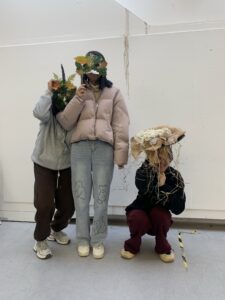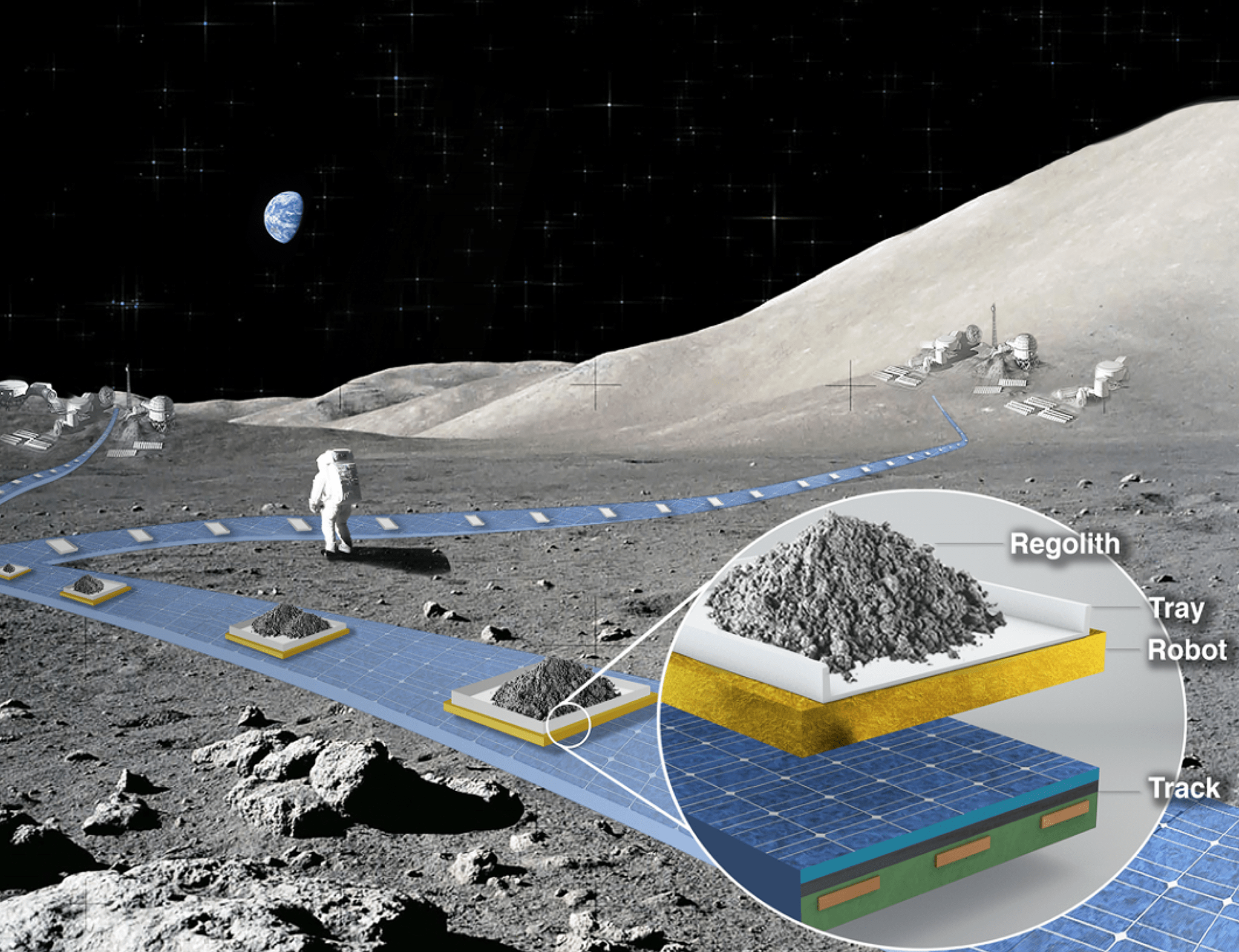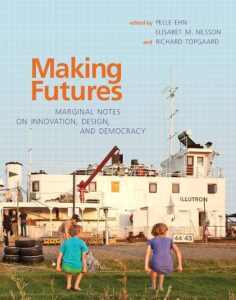Looking at the Future
Designers’ role in sustainable design goes beyond beauty and functionality. They are mediators of political ecology, a field that studies the interaction between environmental change and sociopolitical dynamics. As a designer, my work engages the intersection of global environmental issues and the political ecology of design, with each creative idea being a statement about our collective future.


Figure 1: Spear Thistles Mask Performance, Sally Li, 2024


Figure 2: Foraging of the Spear Thistles, Sally Li, 2024

Figure 3: Artist’s depiction of the FLOAT lunar railway system to provide reliable, autonomous, and efficient payload transport on the Moon, Ethan Schaler, 2022
The work of Tony Fry, Dunn & Lavie, and John Wood helps us understand the potential of design to not only reflect but also transform our environmental story. Fry’s concept of “future distance” highlights the unsustainable conditions that distance us from the future and calls designers to the forefront of sustainable development. Dunn & Lavie’s speculative designs invite us to imagine and discuss different possible futures, while Wood’s micro-utopias inspire and encourage collective optimism to create a better world.
As I critically examine the direction of my field, I recognize the need for designers to engage in visionary politics and embody the change they wish to see in the world through design. This includes moving away from traditional innovation toward more participatory and socially sustainable approaches, as outlined in the book Creating the Future: A Side Note on Innovation, Design, and Democracy.
Finally, my practice, and that of designers in general, needs to be informed by new critical perspectives on the global environment. We must inform our ideas, evaluations, and analyses through a variety of creative strategies to ensure that our projects are not only responses to environmental change, but catalysts for political and environmental change—but they don’t have to be.

Workshop: Manifesto Writing and Eco-Design Archive
- Sustainability First: Prioritize designs that minimize ecological footprints and use resources efficiently. Promoting sustainable lifestyle.
- Empower Communities: Engage local communities in the design process to ensure that solutions meet their needs and respect their contexts.
- Biodiversity Combination: Incorporate natural ecosystems into design to enhance biodiversity and create harmonious environments.
- Innovative Solutions: Encourage the use of materials and technologies that promote environmental health and resource regeneration. Value Design quality. Create products and systems that endure over time, reducing the need for constant replacement and minimizing waste.
- Education and Awareness: Design should aim to educate the public about environmental issues and inspire collective action.
bibliography
Dunne, A. and Raby, F. (2013). Speculative Everything : Design, Fiction, and Social Dreaming. [online] Erscheinungsort Nicht Ermittelbar: Mit Press. Available at: https://s3.amazonaws.com/arena-attachments/916882/ea648c9007886b4fa30ee25e16ff16b2.pdf [Accessed 20 Nov. 2024].
Ehn, P., Nilsson, E.M., Topgaard, R. and Press, M. (2014). Making future : marginal notes on innovation, design, and democracy. [online] Cambridge ; London: The Mit Press. Available at: https://www.diva-portal.org/smash/get/diva2:1405387/FULLTEXT01.pdf [Accessed 20 Nov. 2024].
Fry, T. (2018). DESIGN FUTURING : sustainability, ethics and new practice. [online] Berg. Available at: https://readings.design/PDF/tony-fry-design-futuring-sustainability-ethics-and-new-practice.pdf [Accessed 19 Nov. 2024].
Figure 1,2 are my own work
Figure 3: Schaler, E. (2022). Artist’s depiction of the FLOAT lunar railway system to provide reliable, autonomous, and efficient payload transport on the Moon. NASA Innovative Advanced Concepts. Available at: https://techport.nasa.gov/projects/106037 [Accessed 19 Nov. 2024].
Figure 4: The MIT Press (2014). Making Futures: Marginal Notes on Innovation, Design, and Democracy . Available at: https://www.amazon.co.uk/Making-Futures-Marginal-Innovation-Democracy/dp/0262537486 [Accessed 19 Nov. 2024].




